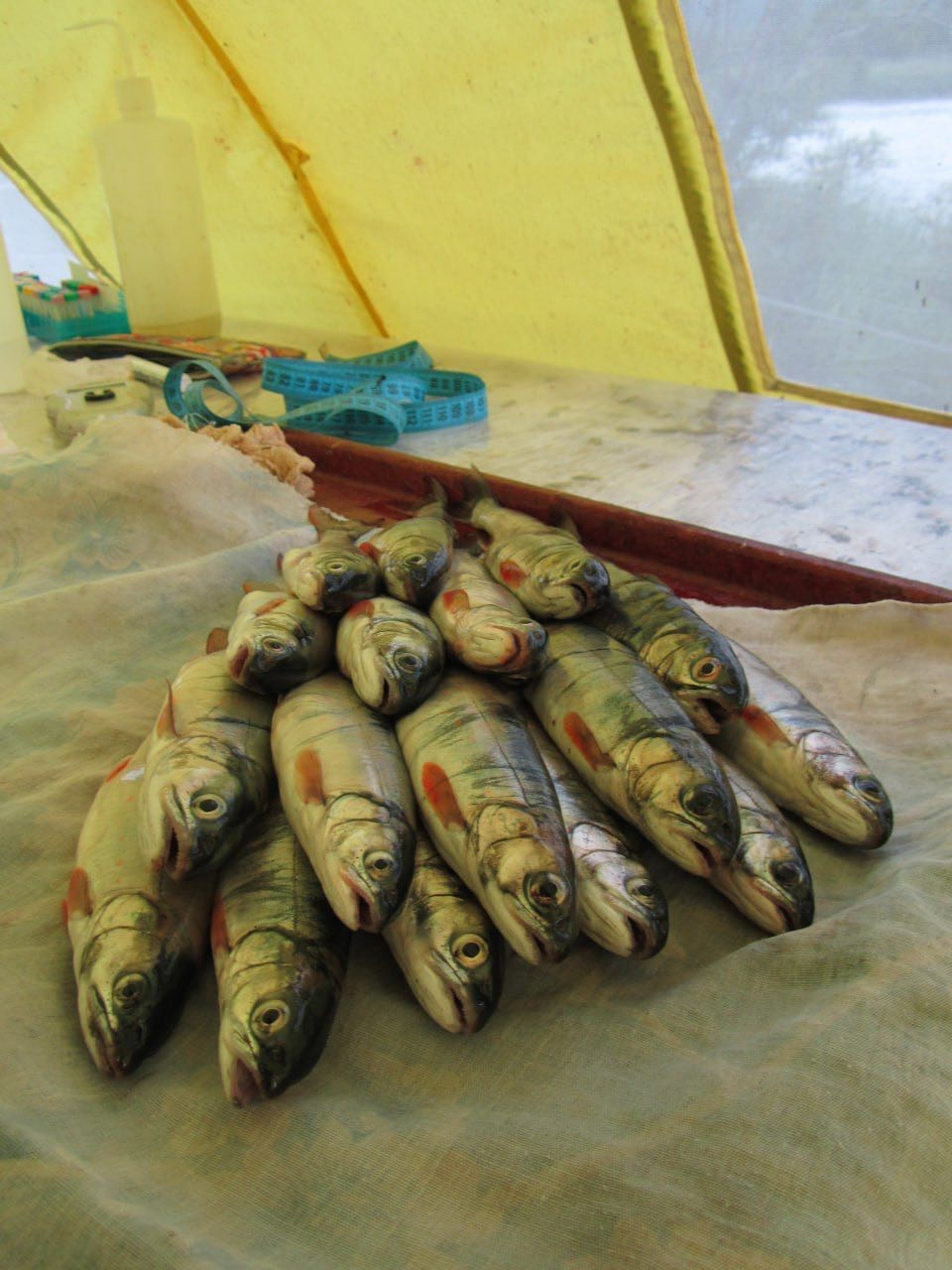
The Kamchatka Volcanoes Nature Park Network, together with scientists from the A.N. Severtsov Institute of Ecology and Evolution of the Russian Academy of Sciences and the Vitus Bering KamSU, conducted research on salmon populations living in isolated mountain reservoirs of the Bystrinsky Park.
In the mountains of the central Sredinny Range (middle range) of the Bystrinsky Park, cold lakes are located near the snow line in harsh climatic conditions. These reservoirs are covered with ice for most of the year (more than 9 months), and even in summer there are frosts. The shallow waters along the banks are practically lifeless, and the transparency of the dark blue water reaches 10 meters.
As part of a comprehensive study of the ecosystems of the Bystrinsky Park, scientists continue to study lakes that have become inaccessible to river salmon due to isolation by rockfalls, lava flows, or rapids on the outflowing river.
“Among the reservoirs of interest to us are such objects as Bolshoe Goltsovoe, Snezhnoe, Avotia, Galyamaki. The lakes vary in size, but they are all characterized by great depths, very low ecosystem productivity, and freezing of the littoral,” said Daria Panicheva, head of the laboratory at the Vitus Bering KamSU.
Scientists have discovered that these isolated reservoirs were inhabited by Malma char before the barriers appeared. Despite the harsh conditions, the populations of these lake char are thriving. This became possible due to their evolutionary specialization.
"All the populations under consideration are characterized by a slowdown in somatic growth while maintaining the rate of morphological differentiation and delayed sexual maturation. This phenomenon is called dwarfism," explained Grigory Markevich, an employee of the IEE RAS.
The char from subnival lakes are similar in appearance to their large ancestors and do not have a morphological reduction. They live up to 9 years, but grow very slowly, rarely reaching 20 centimeters in length. Their metabolism is aimed at saving energy and accumulating fat for the maturation of reproductive materials. Spawning fish are distinguished by a very bright nuptial plumage, their fertility does not exceed 200 eggs. Due to their small size, they cannot bury their eggs in nests, but throw them into cracks between stones.
"Dwarfism is widespread in vertebrates. Its possible cause is considered to be the inhibition of cellular signals during development due to a change in the structure of thyroid hormone receptors. This variant of the development of char seems interesting and requires verification in light of our discovery of the leading role of thyroid hormones in biological speciation in salmonids,” explained Evgeny Yesin, an employee of the Institute of Ecology and Evolution of the Russian Academy of Sciences.
